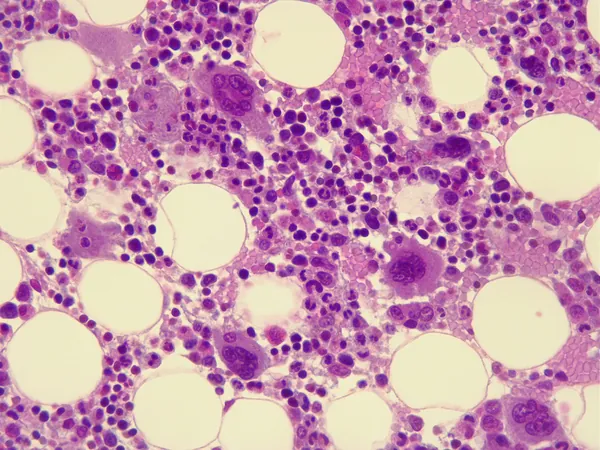
Unlocking the Power of Fiber: A Game-Changer for Bone Marrow Transplant Patients?
2024-12-09
Author: Rajesh
Introduction
A groundbreaking study from City of Hope researchers has emerged, shedding light on the significant role that a high-fiber diet could play in reducing the risk of graft-versus-host disease (GVHD) and myeloma in patients undergoing bone marrow or stem cell transplants for blood cancer. These findings were unveiled at the 2024 American Society of Hematology (ASH) annual meeting, opening new doors for dietary recommendations in post-transplant care.
Understanding GVHD
GVHD is a serious complication faced by patients receiving transplants from donors, where the donor cells mistakenly attack the patient's healthy tissues. The severity of these reactions can range from mild to potentially life-threatening, making preventative strategies crucial for improving patient outcomes.
Traditional Dietary Recommendations
Traditionally, patients suffering from GVHD, which can resemble symptoms of irritable bowel syndrome (IBS) and lead to a compromised immune system, are advised to adopt a low-fiber diet. This means limiting raw produce, particularly fresh vegetables and certain fruits, for up to 40 days after their transplantation in an effort to reduce exposure to harmful bacteria. However, the innovative research from City of Hope challenges these traditional guidelines.
Study Insights
Lead author of the study, Dr. Jenny Paredes, emphasized the previously known benefits of dietary fiber in regulating the immune system in healthy individuals, stating, “Our work now shows this may be true for transplant patients, too.” The study analyzed the dietary habits of 173 transplant patients from ten days before to thirty days after their procedures, revealing that those who consumed higher amounts of fiber were significantly less likely to develop acute GVHD, particularly affecting the gastrointestinal tract, and enjoyed better overall survival rates.
Gut Microbiome and Fiber
Moreover, the research associates lower fiber intake with reduced diversity in the gut microbiome, a factor that can heighten patients’ vulnerability to infections. Excitingly, a higher fiber intake correlated with increased levels of gut microbes that produce butyrate, a short-chain fatty acid noted for its protective properties against GVHD.
Preclinical Studies
Building on these findings, the research team conducted a preclinical study using mouse models of GVHD, where mice fed a high-fiber diet rich in cellulose demonstrated notable health improvements and drastically reduced mortality rates associated with GVHD. These mice also showed enhanced gut microbial diversity and greater concentrations of butyrate, mirroring the positive results in human subjects.



 Brasil (PT)
Brasil (PT)
 Canada (EN)
Canada (EN)
 Chile (ES)
Chile (ES)
 España (ES)
España (ES)
 France (FR)
France (FR)
 Hong Kong (EN)
Hong Kong (EN)
 Italia (IT)
Italia (IT)
 日本 (JA)
日本 (JA)
 Magyarország (HU)
Magyarország (HU)
 Norge (NO)
Norge (NO)
 Polska (PL)
Polska (PL)
 Schweiz (DE)
Schweiz (DE)
 Singapore (EN)
Singapore (EN)
 Sverige (SV)
Sverige (SV)
 Suomi (FI)
Suomi (FI)
 Türkiye (TR)
Türkiye (TR)